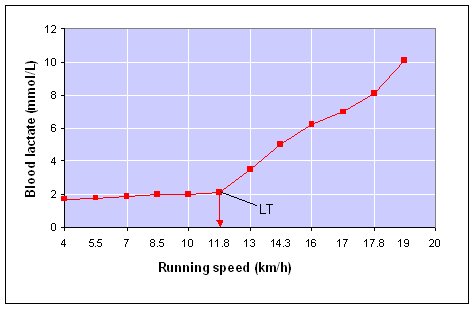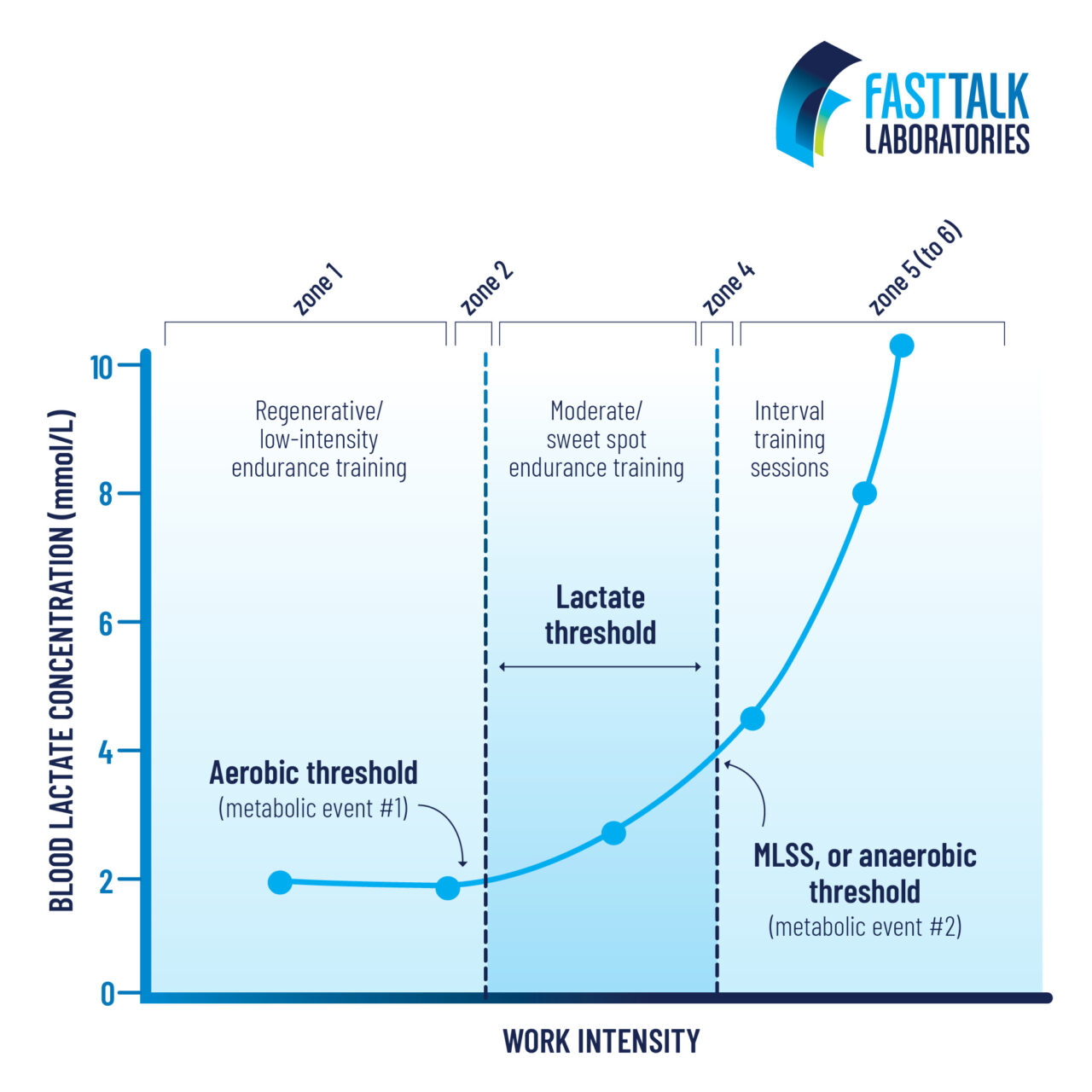What is the Anaerobic Threshold?
The anaerobic threshold (AT) is a crucial concept in endurance sports and fitness training. It signifies the point at which lactic acid starts to accumulate in the blood, causing muscle fatigue and reduced performance. This physiological boundary marks the transition from predominantly aerobic metabolism to anaerobic metabolism, where the body relies on stored energy sources within the muscle cells.
Understanding and improving your anaerobic threshold can significantly enhance your athletic performance and overall fitness. By increasing your lactate threshold, you can maintain higher exercise intensities for longer durations, making it an essential factor in events such as long-distance running, cycling, and swimming. Improving your anaerobic threshold can also contribute to better day-to-day functionality, enabling you to perform daily tasks more efficiently and recover more quickly from strenuous activities.
How to Determine Your Anaerobic Threshold
To optimize your anaerobic threshold training, it’s essential to determine your current lactate threshold. Various methods are available for measuring the anaerobic threshold, each with its advantages and limitations. Here are some common techniques:
Laboratory Tests
Conducted in a controlled environment, laboratory tests provide accurate and precise measurements of anaerobic threshold. These tests typically involve incremental exercise on a treadmill or stationary bike while monitoring heart rate, oxygen consumption, and blood lactate levels.
- Pros: High accuracy and detailed data.
- Cons: Expensive and time-consuming.
Field Tests
Field tests are more accessible and cost-effective alternatives to laboratory tests. They involve performing a standardized exercise protocol, such as a 20-minute time trial or a series of incremental efforts, while monitoring heart rate or perceived exertion.
- Pros: Less expensive and more practical for most athletes.
- Cons: Less precise than laboratory tests and may require estimation of anaerobic threshold.
Estimation Based on Heart Rate or Perceived Exertion
Estimation methods use heart rate or perceived exertion to estimate anaerobic threshold. For example, the lactate threshold heart rate can be estimated as 85-90% of maximum heart rate or by identifying the heart rate at which a noticeable increase in perceived exertion occurs.
- Pros: Simple and cost-effective.
- Cons: Less accurate than laboratory or field tests and may require calibration.
Regardless of the method chosen, understanding your anaerobic threshold is crucial for optimizing your training and performance. By accurately measuring your lactate threshold, you can tailor your workouts to improve your endurance, speed, and overall fitness.
Improving Your Anaerobic Threshold: Training Techniques
Various training techniques can help improve your anaerobic threshold, enabling you to exercise at higher intensities for extended periods. Here are some effective methods to consider:
Interval Training
Interval training involves alternating between high-intensity and low-intensity exercise intervals. This approach challenges your anaerobic system, promoting lactate threshold improvement. For example, you might alternate between 1-minute sprints and 2-minute recovery jogs for a total of 20 minutes.
Tempo Runs
Tempo runs, also known as lactate threshold runs, involve maintaining a challenging but sustainable pace for an extended period. Typically, a tempo run lasts between 20 and 45 minutes, during which you should aim to maintain a pace that feels comfortably hard. This type of workout helps improve your anaerobic threshold by increasing your body’s ability to clear lactic acid and work at higher intensities.
Threshold Workouts
Threshold workouts involve exercising at or near your anaerobic threshold for extended periods. These sessions can include continuous efforts, such as a 30-minute run at your anaerobic threshold pace, or repetitions, such as 4 x 10-minute intervals at your anaerobic threshold pace with 2-minute recovery jogs in between.
By incorporating these training techniques into your fitness program, you can effectively improve your anaerobic threshold, build endurance, and enhance overall performance. Remember to progress gradually and balance intensity with adequate recovery to maximize your training benefits.
Nutrition and Recovery for Enhanced Performance
Proper nutrition and recovery strategies play a vital role in optimizing anaerobic threshold training. By focusing on these aspects, you can maximize your training benefits and improve overall performance.
Carbohydrate Intake
Carbohydrates are the primary energy source for high-intensity exercise, making them essential for anaerobic threshold training. Consuming adequate carbohydrates before, during, and after workouts can help maintain energy levels, reduce muscle damage, and enhance recovery.
Hydration
Staying hydrated is crucial for maintaining optimal performance during anaerobic threshold training. Dehydration can impair exercise capacity, increase perceived exertion, and hinder recovery. Ensure you consume enough fluids before, during, and after workouts to replace lost sweat and maintain fluid balance.
Post-Exercise Recovery Strategies
Proper recovery is vital for improving anaerobic threshold and overall performance. Consider incorporating the following strategies into your post-exercise routine:
- Refuel with a combination of carbohydrates and protein to promote muscle recovery and glycogen replenishment.
- Rehydrate with fluids and electrolytes to replace losses and support recovery.
- Engage in active recovery, such as light jogging or stretching, to aid in muscle relaxation and waste removal.
- Schedule rest days and prioritize sleep to promote physical and mental recovery.
By focusing on nutrition and recovery, you can optimize your anaerobic threshold training and enhance overall performance. Remember to balance your carbohydrate intake, maintain proper hydration, and prioritize recovery strategies to support your training goals.
Incorporating Anaerobic Threshold Training into Your Fitness Program
Integrating anaerobic threshold workouts into your fitness program can significantly improve your endurance and overall performance. To maximize the benefits of anaerobic threshold training, consider the following guidelines:
Periodization
Periodization is the systematic planning of training phases to optimize performance. Organize your anaerobic threshold workouts into distinct periods, such as base, build, and peak phases, to ensure progressive overload and adequate recovery.
Progression
Gradually increase the intensity, duration, or frequency of anaerobic threshold workouts over time to challenge your body and promote adaptation. Progression should be individualized based on your fitness level, goals, and response to training.
Balancing Intensity and Recovery
Anaerobic threshold training is demanding, so it’s crucial to balance intense workouts with adequate recovery. Schedule rest days, easy workouts, and cross-training activities to facilitate recovery and prevent overtraining.
Sample Workout Integration
Here’s an example of how to incorporate anaerobic threshold workouts into a weekly training schedule:
- Monday: Easy run or cross-training (45-60 minutes)
- Tuesday: Anaerobic threshold workout (20-30 minutes at or near anaerobic threshold pace)
- Wednesday: Rest or easy cross-training (30-45 minutes)
- Thursday: Tempo run or interval training (20-30 minutes at moderate to high intensity)
- Friday: Rest or easy cross-training (30-45 minutes)
- Saturday: Long run or ride (60-90 minutes at moderate intensity)
- Sunday: Rest or easy cross-training (30-45 minutes)
By incorporating anaerobic threshold workouts into a well-rounded fitness program, you can effectively improve your endurance, speed, and overall performance. Remember to prioritize periodization, progression, and balancing intensity and recovery to optimize your training benefits.
Real-World Examples: Anaerobic Threshold Training in Action
Anaerobic threshold training is a valuable tool for endurance athletes across various sports. Here are some examples of anaerobic threshold training plans and workouts for running, cycling, and swimming:
Running
A classic anaerobic threshold running workout is the 30-30 interval session. This workout consists of alternating 30-second high-intensity intervals at 90-95% of your maximum heart rate with 30-second recovery periods at a low-intensity jog. Repeat this pattern for 10-15 sets, aiming for a total of 15-20 minutes at high intensity.
Cycling
For cyclists, a 2 x 20-minute threshold workout is an effective anaerobic threshold training session. Warm up for 10-15 minutes, then cycle at a challenging but sustainable pace for 20 minutes. After a 5-10 minute recovery period, repeat the 20-minute effort. This workout can be performed once or twice a week, adjusting the duration and intensity based on your fitness level and goals.
Swimming
Swimmers can benefit from a 400-meter threshold set. After warming up, swim 400 meters at a pace that is challenging but sustainable for the entire distance. Aim for a consistent time for each repetition, with a short rest interval (15-30 seconds) between each 400-meter effort. Repeat this set 3-5 times, depending on your fitness level and goals.
These examples demonstrate how anaerobic threshold training can be adapted to various endurance sports and individual fitness levels. By incorporating these workouts into your training program, you can effectively improve your anaerobic threshold, build endurance, and enhance overall performance.
Common Mistakes and Misconceptions about Anaerobic Threshold Training
Anaerobic threshold training is a valuable tool for endurance athletes, but it’s essential to avoid common mistakes and misconceptions that can hinder progress and lead to suboptimal performance. Here are some common pitfalls and tips for maximizing anaerobic threshold training benefits:
Overemphasizing Intensity
While intensity is an essential component of anaerobic threshold training, overemphasizing it can lead to inadequate recovery, increased risk of injury, and burnout. Balance high-intensity workouts with lower-intensity sessions and rest days to ensure proper recovery and progression.
Neglecting Progression
Progression is key to improving anaerobic threshold. Gradually increase the duration, frequency, or intensity of anaerobic threshold workouts over time to challenge your body and promote adaptation. Avoid stagnation by regularly reassessing your fitness level and adjusting your training plan accordingly.
Ignoring the Importance of Recovery
Anaerobic threshold training can be demanding, so it’s crucial to prioritize recovery. Schedule rest days, engage in active recovery sessions, and prioritize sleep to facilitate recovery and optimize performance. Listen to your body and adjust your training plan as needed to accommodate for fatigue and recovery needs.
Lack of Individualization
Every athlete is unique, so it’s essential to individualize anaerobic threshold training based on your fitness level, goals, and response to training. Tailor your training plan to your specific needs and preferences, and be open to adjusting it as your fitness improves and your goals evolve.
By avoiding these common mistakes and misconceptions, you can effectively maximize the benefits of anaerobic threshold training and optimize your endurance performance.
Continuous Improvement: Monitoring and Adjusting Your Anaerobic Threshold Training
Monitoring and adjusting anaerobic threshold training is crucial for long-term progress and optimal performance. Utilize data from fitness trackers, lab tests, and self-assessment to inform your training decisions and make necessary adjustments. Here are some strategies for effectively monitoring and adjusting your anaerobic threshold training:
Fitness Trackers
Modern fitness trackers and GPS watches can provide valuable data, such as heart rate, pace, and distance. Regularly review this data to assess your progress and adjust your training intensity, duration, or frequency as needed. Keep in mind that fitness trackers are tools to guide your training, not definitive measures of anaerobic threshold.
Lab Tests
Periodic lab tests can offer precise and accurate measurements of anaerobic threshold. These tests can help you understand your current fitness level, track your progress, and adjust your training plan accordingly. While lab tests can be expensive and time-consuming, they can provide valuable insights to optimize your anaerobic threshold training.
Self-Assessment
In addition to data-driven assessments, self-assessment can help you monitor your anaerobic threshold training. Pay attention to signs of fatigue, muscle soreness, and perceived exertion during workouts. If you notice a decrease in performance or an increase in recovery time, it may be necessary to adjust your training plan to accommodate for these changes.
By regularly monitoring and adjusting your anaerobic threshold training, you can ensure long-term progress, prevent plateaus, and optimize your endurance performance.






